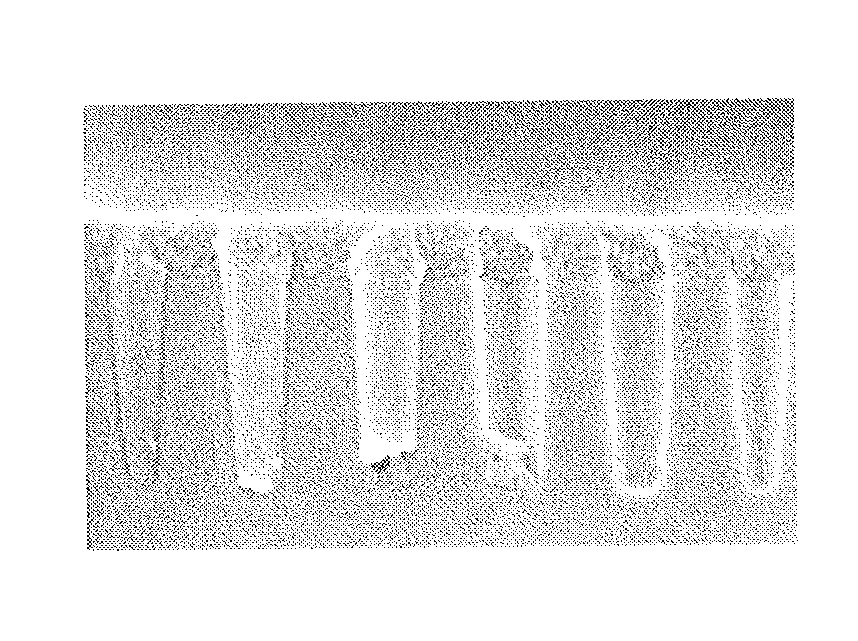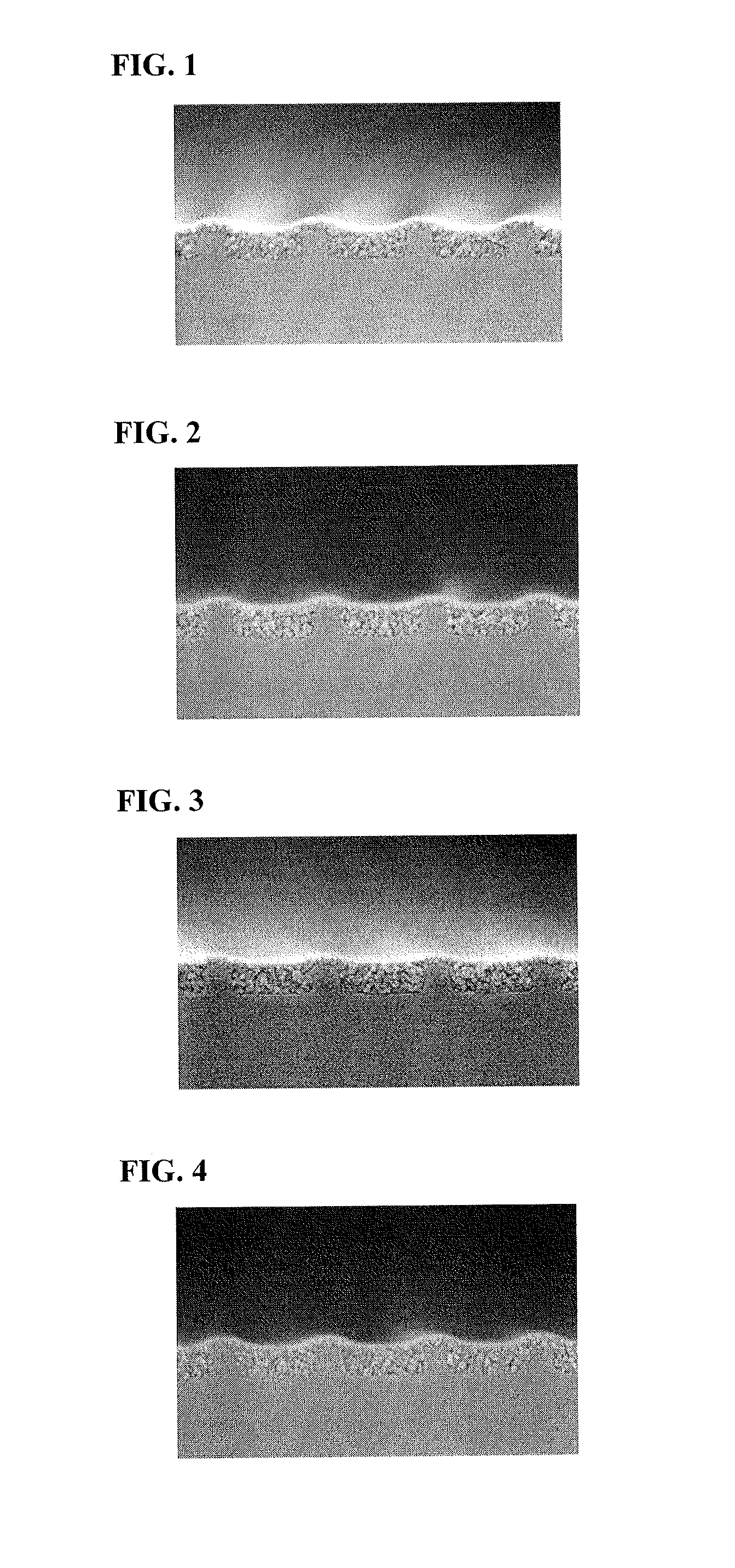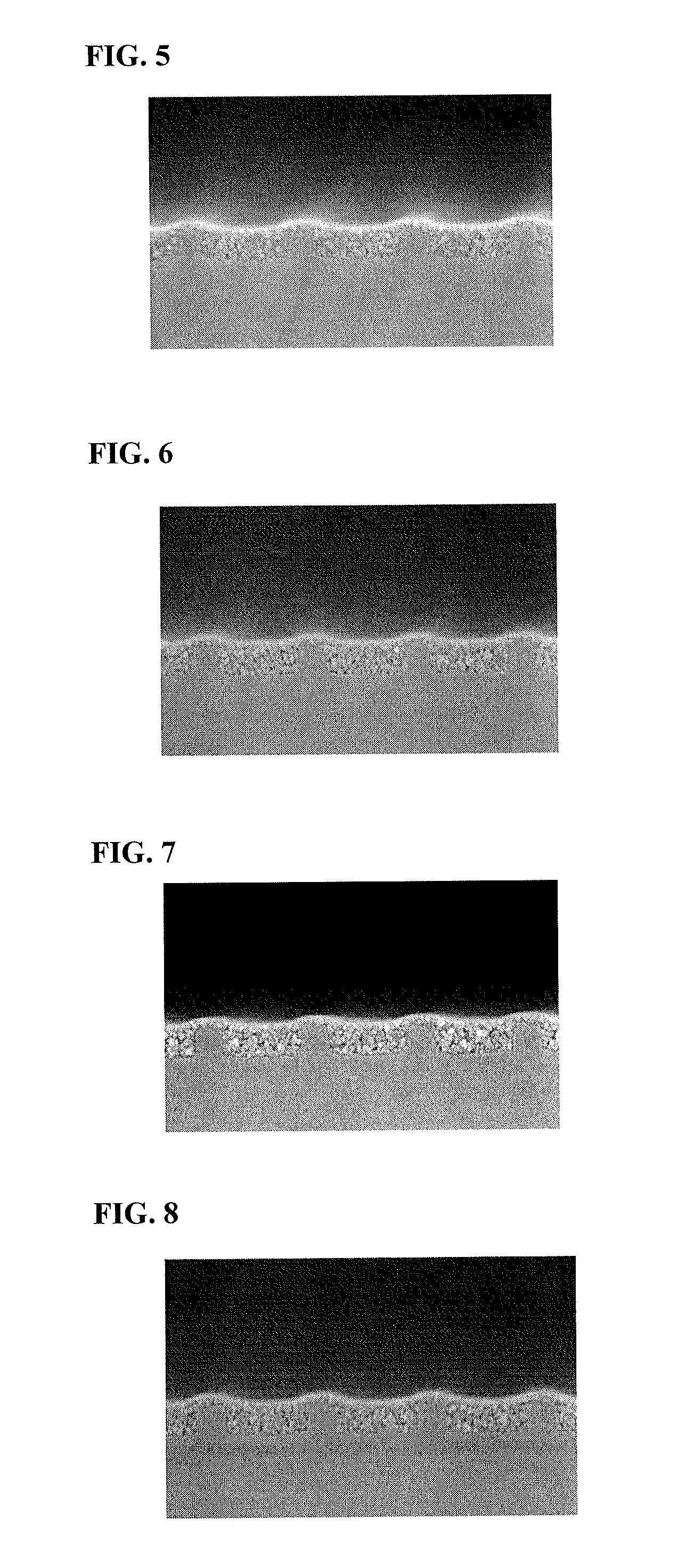Resist underlayer film forming composition that contains novolac resin having polynuclear phenol
- Summary
- Abstract
- Description
- Claims
- Application Information
AI Technical Summary
Benefits of technology
Problems solved by technology
Method used
Image
Examples
synthesis example 1
[0107]20.79 g of propylene glycol monomethyl ether was added to 8.65 g of 1,1,2,2-tetrakis(4-hydroxyphenyl)ethane (product name: TEP-DF, manufactured by Asahi Organic Chemicals Industry Co., Ltd.), 5.00 g of 1-pyrenecarboxyaldehyde (manufactured by Maruzen Chemical Industries, Ltd.), and 0.21 g of methanesulfonic acid, and this mixture was stirred under reflux for 23 hours in nitrogen atmosphere. After the reaction was completed, this solution was diluted with 35 g of tetrahydrofuran. This diluted solution was subjected to reprecipitation in a mixed solvent of methanol / water (50% by mass / 50% by mass). The obtained precipitate was filtered, and the residue was washed and then dried under reduced pressure at 60° C., whereby 9.4 g of a novolac resin was obtained (including the polymer of Formula (8-1)). The weight-average molecular weight measured in terms of standard polystyrene by GPC was 3,600.
synthesis example 2
[0108]20.02 g of propylene glycol monomethyl ether was added to 6.06 g of 1,1,2,2-tetrakis(4-hydroxyphenyl)ethane (product name: TEP-DF, manufactured by Asahi Organic Chemicals Industry Co., Ltd.), 7.00 g of 1-pyrenecarboxyaldehyde (manufactured by Maruzen Chemical Industries, Ltd.), and 0.29 g of methanesulfonic acid, and this mixture was stirred under reflux for 23 hours in nitrogen atmosphere. After the reaction was completed, this solution was diluted with 20 g of tetrahydrofuran. This diluted solution was subjected to reprecipitation in a mixed solvent of methanol / water (80% by mass / 20% by mass). The obtained precipitate was filtered, and the residue was washed and then dried under reduced pressure at 60° C., whereby 9.1 g of a novolac resin was obtained (including the polymer of Formula (8-20)). The weight-average molecular weight measured in terms of standard polystyrene by GPC was 4,800.
synthesis example 3
[0109]19.90 g of propylene glycol monomethyl ether was added to 3.89 g of 1,1,2,2-tetrakis(4-hydroxyphenyl)ethane (product name: TEP-DF, manufactured by Asahi Organic Chemicals Industry Co., Ltd.), 9.00 g of 1-pyrenecarboxyaldehyde (manufactured by Maruzen Chemical Industries, Ltd.), and 0.38 g of methanesulfonic acid, and this mixture was stirred under reflux for 23 hours in nitrogen atmosphere. After the reaction was completed, this solution was diluted with 20 g of tetrahydrofuran. This diluted solution was subjected to reprecipitation in a mixed solvent of methanol / water (80% by mass / 20% by mass). The obtained precipitate was filtered, and the residue was washed and then dried under reduced pressure at 60° C., whereby 11.2 g of a novolac resin was obtained (including the polymer of Formula (8-22)). The weight-average molecular weight measured in terms of standard polystyrene by GPC was 5,700.
PUM
| Property | Measurement | Unit |
|---|---|---|
| Composition | aaaaa | aaaaa |
Abstract
Description
Claims
Application Information
 Login to View More
Login to View More - R&D
- Intellectual Property
- Life Sciences
- Materials
- Tech Scout
- Unparalleled Data Quality
- Higher Quality Content
- 60% Fewer Hallucinations
Browse by: Latest US Patents, China's latest patents, Technical Efficacy Thesaurus, Application Domain, Technology Topic, Popular Technical Reports.
© 2025 PatSnap. All rights reserved.Legal|Privacy policy|Modern Slavery Act Transparency Statement|Sitemap|About US| Contact US: help@patsnap.com



